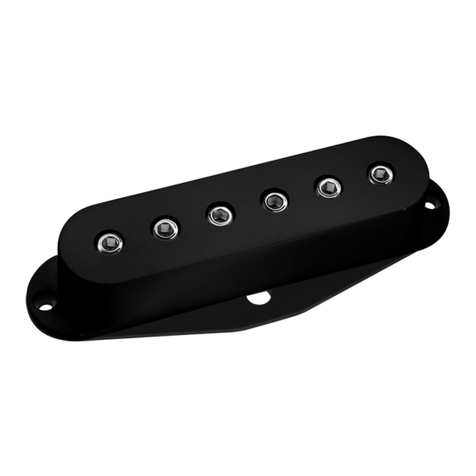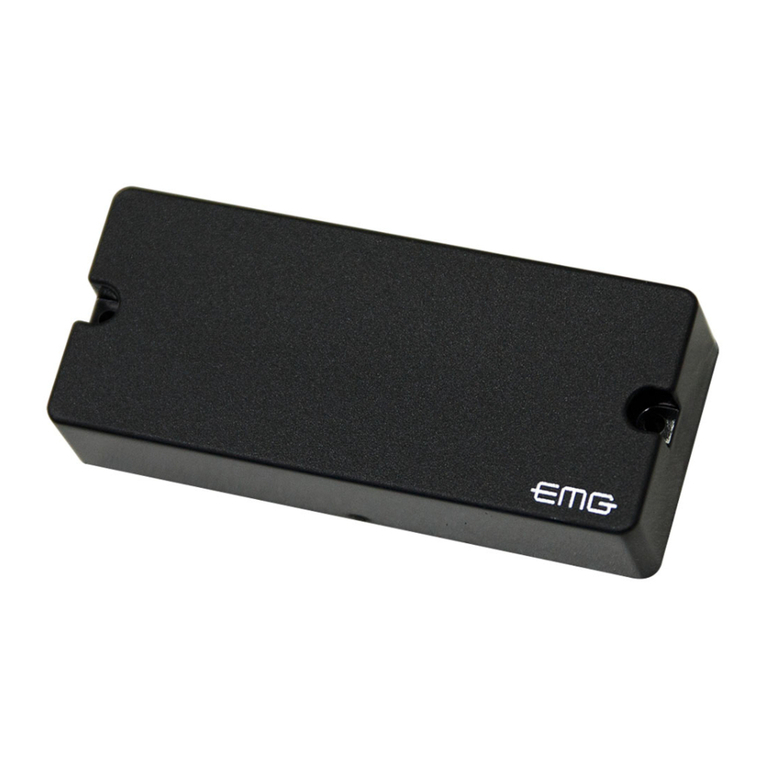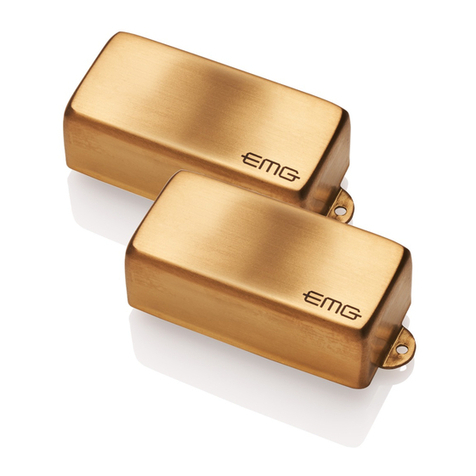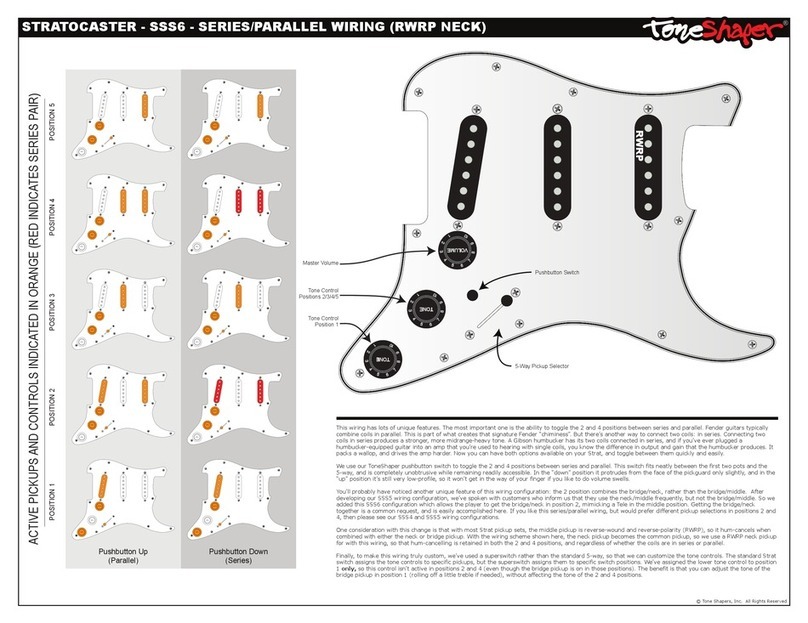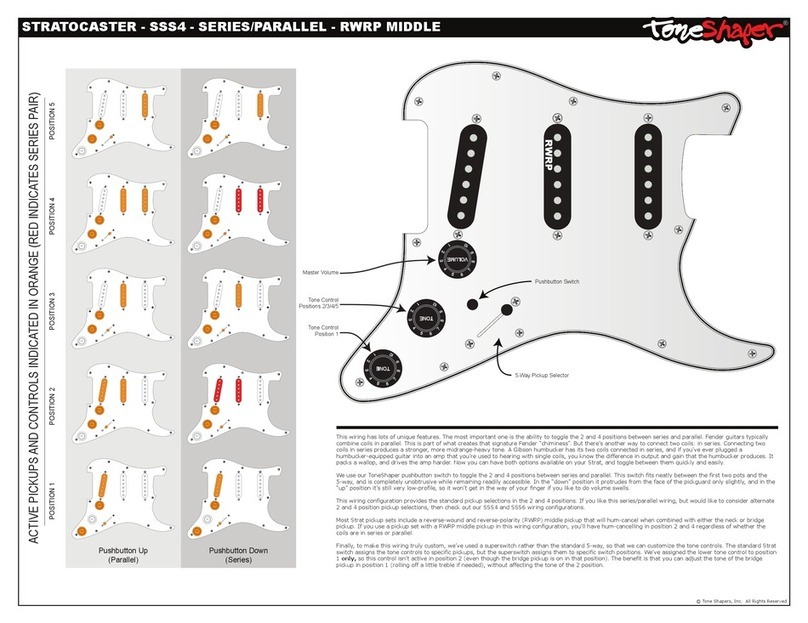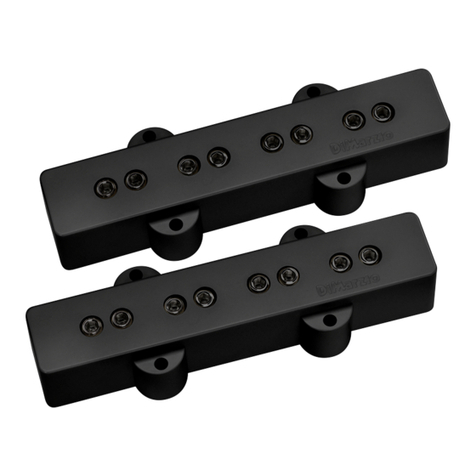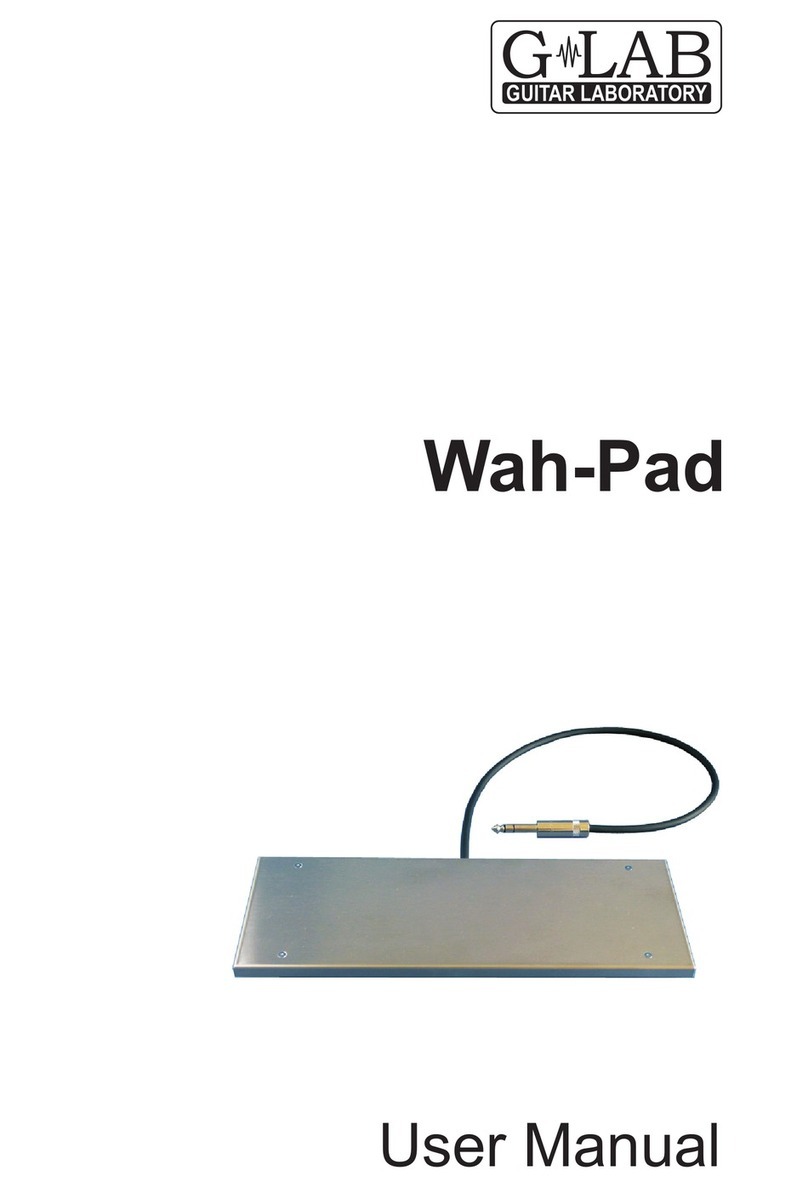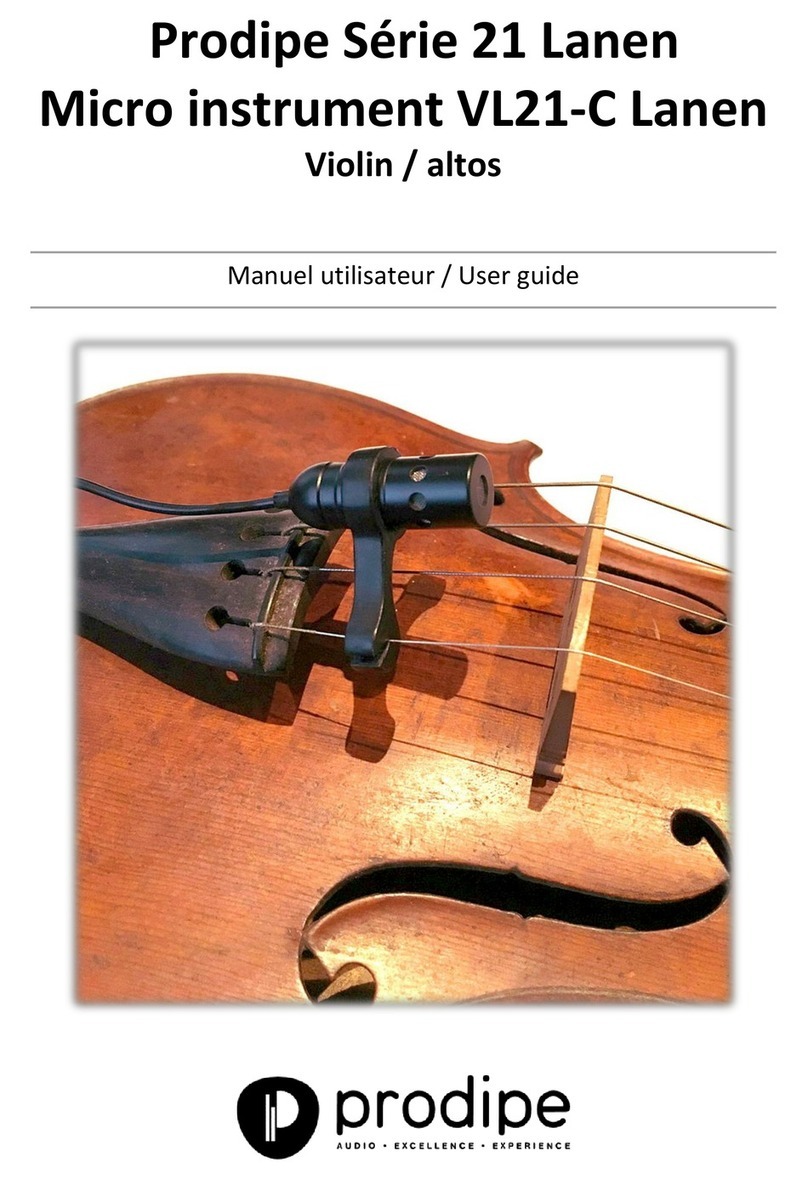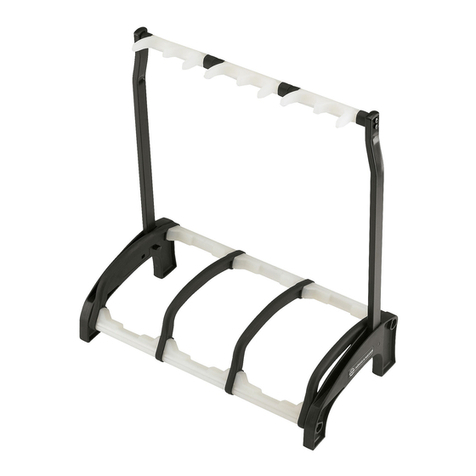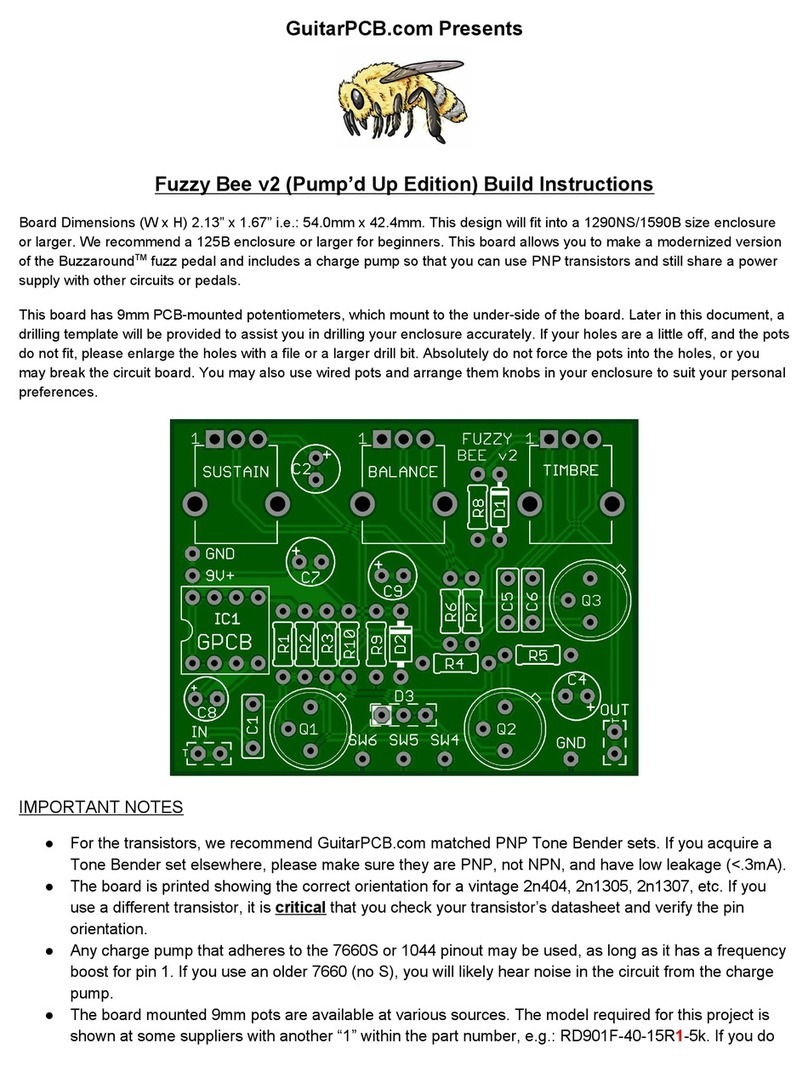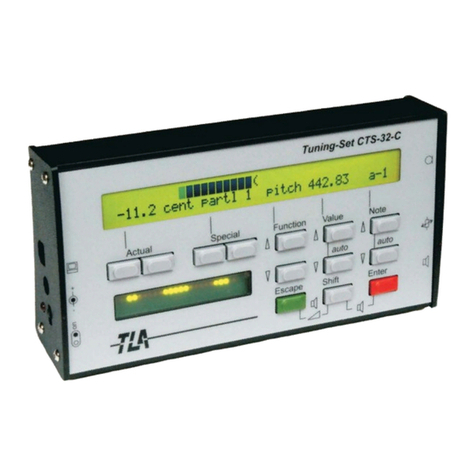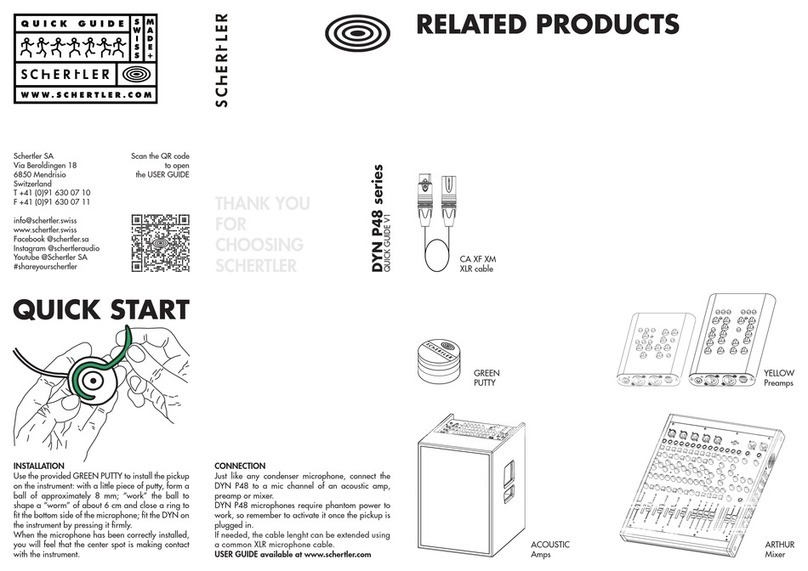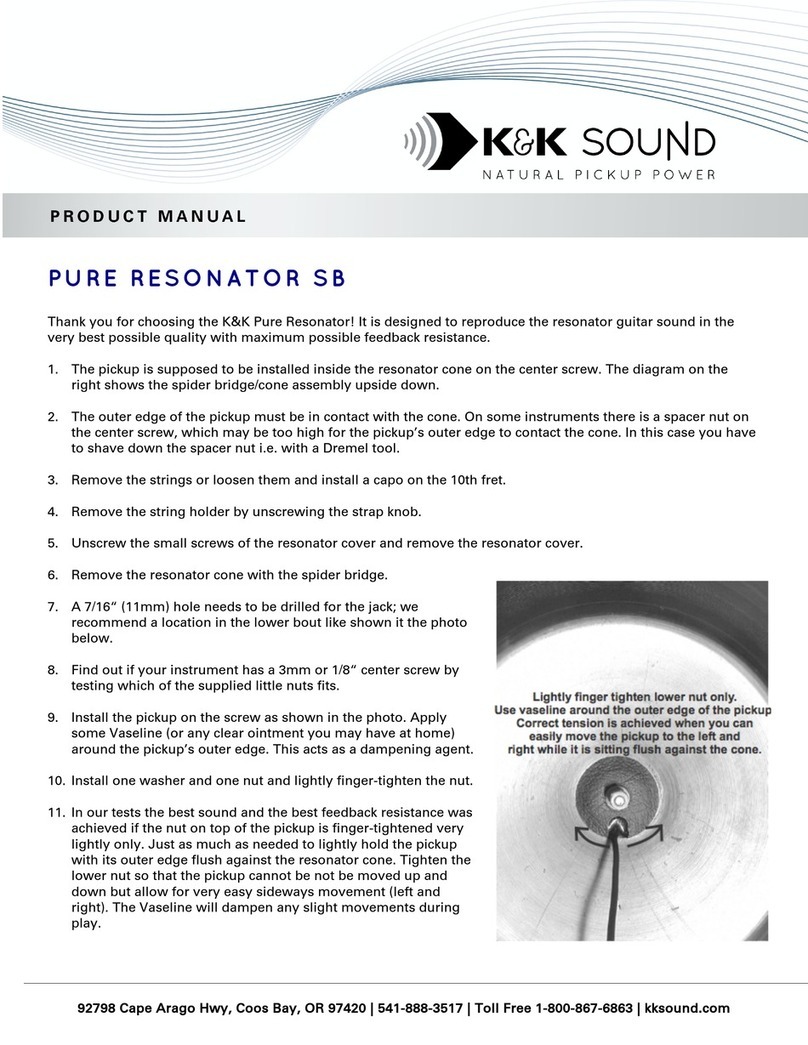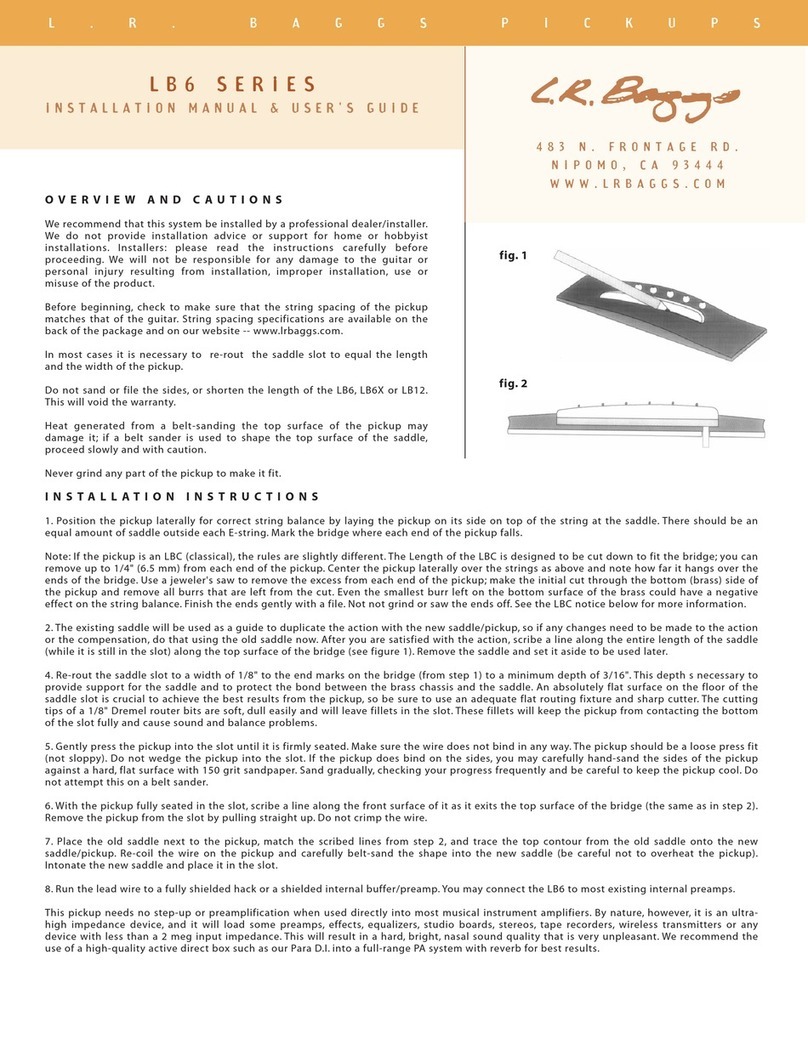
T
S
5
0
0
5
0
S
P
L
C
T
S
1
9
3
7
T
S
5
0
0
5
0
S
P
L
C
T
S
1
9
3
7
T
S
5
0
0
5
0
S
P
L
C
T
S
1
9
3
7
T
S
5
0
0
5
0
S
P
L
C
T
S
1
9
3
7
OUR POTS
The pots in most of our Gibson wiring kits come with threaded
bushings that are longer than the ones typically used in
Gibsons. This gives extra flexibility in terms of accommodating
guitars with differing top thicknesses. We provide an extra nut
for each pot so that you can adjust how much of the threaded
bushing protrudes from the face of the guitar. You may find
that the thickness of the top varies at the control hole
locations, so each pot may need to be adjusted individually to
allow the minimum amount of threaded bushing to protrude
from the guitar’s face, that still allows for a flat washer and a
nut to be installed on the face of the guitar (you want a toothed
lockwasher inside, and a flat washer outside).
By the way, our pots have the USA-pattern fine knurl,
designed for knobs that have 24 teeth molded into them, not
18 teeth. If your knobs have 18 teeth, you’ll need new ones!
Genuine Gibson knobs have 24 teeth.
WIRE TYPES & SHIELDING
In the diagram at left, you’ll see white wires and black wires.
The white wires carry signal, while the black wires don’t,
they’re just ground wires. Other than the two pickup hot leads,
there are only three wires that carry signal, and all three are
attached to the switch.
We have no way of knowing what kind of pickups you’ll be
installing, and what kind of leads will be attached to them. You
might have a white/black pair as shown, or a 4-conductor lead
with white/black/red/green/bare, or a braided lead similar to
the braided wire we’ve included in your wiring kit.
Our kits include both shielded wire (the one with the exterior
braid) and unshielded wire (all the others). Shielding is gener-
ally a good thing, it reduces unwanted hum and extraneous
noise caused by EMI/RFI (ElectroMagnetic Interference and
Radio-Frequency Interference), many sources of which exist
in our modern world. Gibson has always been keen on
hum-reduction, so they have traditionally used the shielded
wire for all wires that carry signal.
But the shielded wire is a pain to work with. If you use it, you’ll
connect the inner conductor (the black wire in the middle)
wherever we show white wires at left. Once you’ve connected
the inner black wire to the appropriate place, the outer braid is
connected - at either end, or both - to any ground point. This
usually means tacking it to a pot casing (as shown in the gray
box at left), or to the ground lug on the switch (that’s the big
heavy lug).
But you may have an alternative to using the shielded wire.
Some guitars allow you to easily shield the control cavity with
a conductive material such as copper or aluminum foil, or
shielding paint. Les Pauls, for instance, are pretty easy to
shield since the cavity and cover plate are completely accessi-
ble. In cases where the entire cavity is shielded, using shield-
ed wire would be redundant and unnecessary.
Unfortunately, ES-335s don’t usually fall into the easy to shield
category. But some similar guitars, such as Gibson’s ES-336,
do allow for easy shielding. If your guitar has a control cavity
that is accessible, we would recommend shielding the entire
cavity over just using braided wire, as this will yield a more
comprehensively shielded guitar. Copper and aluminum
shielding tapes and foils are readily available, just make sure
you buy something designed for EMI/RFI shielding, with
conductive adhesive. Or use paint. M.G. Chemicals Super
Shield (aerosol or brush on) is a very good, nickel-based paint
specifically made for shielding circuits from EMI/RFI.
T
S
5
0
0
5
0
S
P
L
C
T
S
1
9
3
7
George Ellison
335-V
ES-335®
Short Switch
11/3/19
-1 of 1
DATE TITLE
PAGE
ADOC
DRAWN
ASSY PN
© Tone Shapers, Inc. - All Rights Reserved
Build A Beer Guitar
Tone Shapers, Inc.
772-217-8662
www.toneshapers.com
